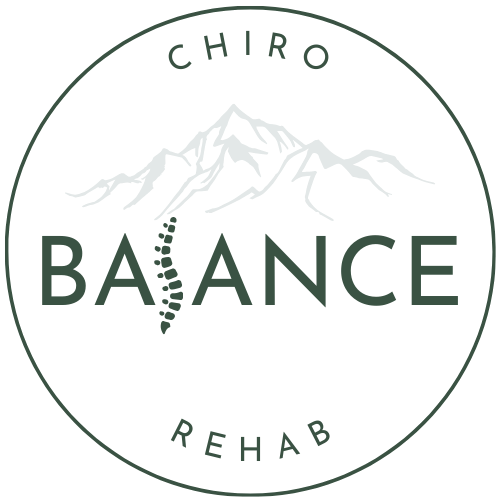Types of Tongue Ties
As a Denver chiropractor, I see a lot of newborns with tongue ties. Interestingly enough, I work with a lot of adults with tongue ties as well and although the tongue gets all the attention, the general verbiage for oral ties is Tethered Oral Tissues (TOTS). The terms oral ties and tethered oral tissues (TOTS) take into to account the other areas of the mouth that may be restricted and cause restriction as well. An oral tie is a band of restricted tissue that causes functional concerns. These “bands” connect the tongue to the floor of the mouth, the cheeks to the gums and the lips to the gums as. Any of these areas can be thickened, shortened or restricted and cause concerns.
What are the different types of oral ties?
Despite tongue tie being the most “popular” type of tie, there are multiple areas that can be “tied” and there’s more than one type of tongue tie. The other options include:
Upper cheek ties (right / left) known as buccal ties - connects the cheek to the gums
Lower cheek ties (right / left) also known as buccal ties - connects the cheek to the gums
Upper lip tie - connects the lip to the gums
Lower lip tie - connects the lip to the gums
Anterior tongue tie (more in the front and typically what people see)
Posterior tongue tie (deeper and more commonly missed)
What is the difference between an anterior and posterior tongue tie?
An anterior tongue tie is typically pretty obvious, which is what most people imagine when they think of a tongue tie. This is typically a thin band of tissue anchoring the tongue to the floor of the mouth, or even attaching up into the gum. However, a posterior tongue tie is typically a more hidden as it is a bit deeper under the tongue and is often missed. This is why many people are told their kiddo doesn’t have a tie, but then continue to have symptoms that resemble that of a tongue tie (such as difficulty feeding). If your concerns have been dismissed please know that not every provider has additional training and experience in this area and you are entitled to a second opinion!
Does the type of tongue tie determine the need for a release?
The location of the band of tissue (also known as a frenum) or how it looks does not determine the need for a release. Instead, symptoms and function of the structures of the mouth and surrounding areas are what determine the need for a release. Again, only a skilled provider can provide this assessment so if someone simply looks at the tongue and provides a diagnosis based off of that criteria alone, please seek out a provider that asks in-depth questions and provides a full assessment! Also, to note- please see a dentist with specific training in tongue ties (and ideally airway) for a formal diagnosis. “Bodyworkers” such as chiropractors, occupational therapists, physical therapists, etc. can identify functional and structural concerns, but cannot diagnose a tongue tie or any other oral ties. Collaborative care between a release provider and a “bodyworker” is incredibly important as bodywork is important prior to and after a tongue tie release.
If you have any questions about tongue tie, please feel free to reach out and contact Dr. Dani!
Hi there!
My name is Dr. Dani and I’m an in-home chiropractor for busy women and infants within the Denver Metro area. I work with women of all ages and stages, but truly shine with the pregnancy, postpartum, and pediatric populations. I strive for quality care through extended appointment times, diverse treatment modalities, personalized home-care recommendations, and education so families can feel both empowered and cared for!
Questions? Comments? CONTACT ME
Need some bodywork? BOOK HERE
Have I helped you or a family member? LEAVE A GOOGLE REVIEW
Looking for the fun stuff? Instagram: Balance.chiro.and.rehab
New here? Welcome! Check out more information about Dr. Dani and what Balance Chiro and Rehab offers to those in the Denver Metro area (and beyond) HERE.
Fun Little Disclaimers:
Affiliate Disclaimer. From time to time, Balance Chiro and Rehab (BCR) participates in affiliate marketing and may include affiliate links on some of our pages. This means that BCR earns a commission if and when you click on and make purchases via the affiliate link. We will inform you when one of the links is an affiliate link with an * indicator. Please note, BCR only recommends products or services that we believe will add value to you. However, it is your personal responsibility to conduct your own investigation into any affiliate offers and determine whether each offer is right for you or your business before purchasing.
Medical Disclaimer. The information on this Site, and available for download or purchase through this Site, is for information and educational purposes only. Nothing contained on this Site is or should be considered or used as a substitute for medical or any other professional advice, diagnosis, or treatment. Always seek the guidance of your doctor or other qualified health professional with any questions you may have regarding your personal health or a medical condition and/or on any opinions expressed within this site.
No Doctor-Patient Relationship. Your use of this Site and/or our products or services, including any implementation of any suggestions set out on this Site or in our products or services, does not create a doctor-patient relationship between you and Balance Chiro and Rehab (BCR).

